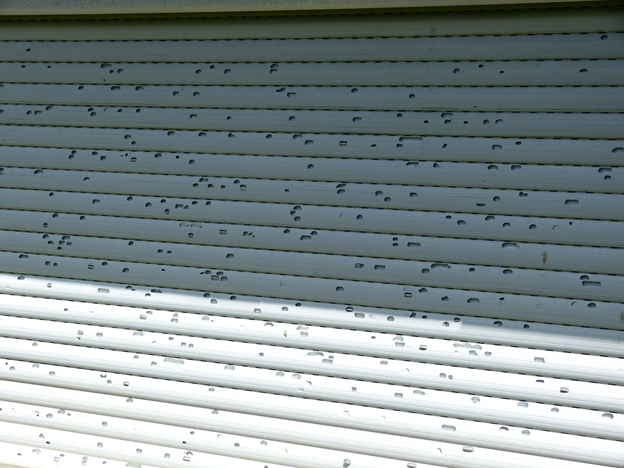If you live in an area prone to hailstorms, it is essential that you take measures to reduce hail damage to your business and prepare for commercial storm damage cleanup.
Hail can cost your business hundreds of thousands (or even millions!) of dollars in damage to your roof, siding, and exposed equipment. Roofs are the part of your business’ structure that is most commonly affected by hail damage, but the damage can be much more generalized depending on the intensity of the storm and the structure of the building and exterior areas.
The type of damage can be categorized as either functional or cosmetic. Functional damage impacts the performance of the building structure and usually needs to be repaired quickly so as not to inflict further loss. Cosmetic damage doesn’t affect the function of the structure, but it does impact the way the building looks.
If your business has experienced damage from a hailstorm, it is important that you prepare for commercial storm damage cleanup. First, hire an inspector to assess the damage. If you have hail insurance, the insurance company will send one for you to assess the extent and cost of damage, in addition to coordinating cleanup. If you don’t have insurance, or if it isn’t covered by your insurance, you will have to hire out an inspector and a cleanup and repair company.
Some of the decisions your business can make to reduce hail damage include:
1. Hiring an inspector: If you live in an area that is prone to hail damage, or if you have been affected by hail damage in the past, it is important that you have an inspector identify potential weaknesses in the structure and materials used in your building’s structure that can help to reduce hail damage.
2. Choose the right roof cover: If you live in a hail-prone area, the Insurance Institute for Business & Home Safety (IBHS) recommends the use of roofing products that have a UL 2218 Class 4 or FM Approvals 4473 Class 4 rating.
3. Install hail guards: If you have external equipment or roof, mounted equipment, installing hail can help prevent hail damage to condenser coils, fan blades, and exhaust vents, among other equipment parts.


